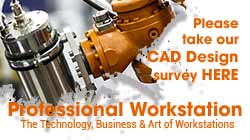
Automotive design or ground transportation design and high-performance simulation go hand-in-hand. Often times a high-end workstation or even a local group of high-end workstations will no longer do the job. If you are looking for HPC solutions, what should you be thinking about? HPE tries to give customers some ideas.
If you are running high-end simulations for product design and development, you could be using high-end workstations for your entire work-flow: pre-processing, meshing, simulation, post-processing & visualization. In the case that your projects are becoming more numerous, more complex, or both, your department might be considering changes to the computing infrastructure.
Obviously, you are not the only group or company to make the journey from workstations to servers to clusters. Companies big and small find themselves facing hurdles to simulation as their computing needs out-grow their capacity. There exist options for cloud-only HPC to fully in-house HPC. Today companies can mix and match HPC capabilities to have a cost-effective computing solution.
What kind of structure does an HPC provider like HPE deliver? There is something for companies of every size. Philippe Trautmann laid out several points recently at the ANSYS Automotive Simulation World Conference in order to illustrate how HPE is striving to meet customer expectations in performance, quality, and efficiency during the design & engineering cycle.
- Testing & benchmarking HPC solutions with simulation packages like that from ANSYS. HPE has been testing with ANSYS solutions for over 15 years.
- Access to the HPE Center of Excellence allowing customers to test-drive solutions or develop proof-of-concept solutions with access to the latest hardware as well as unreleased products and future products.
- HPE supports complete solutions for products like the ANSYS simulation appliances with channel partners.
- The appliance solution helps customers transition from groups of workstations to a centralized, cluster infrastructure for simulation.
HPE, which came into being in November 2015, has one group which is focused on HPC, Big Data, and IoT. This structure unifies management and engineering resources to support the Apollo line as well as new products.
Mr. Trautmann also ventures into the future architecture of a computing machine. He discusses a "machine" based on a data-model or a memory-model rather than a computing-model. This vision of "The Machine" is the HPE vision for the future. And this vision entails not just looking at how to best run HPC simulations. It means integrating processes and workflows to be done in the best way, the most effective way as well as to be done quickly.
The PW perspective
In simulation, whether that be in automotive, aerospace, bio-sciences, or other domains, there are customers running on powerful workstations, on large HPC clusters, in the cloud, and running combinations of solutions in between. It is clear that companies finding themselves needing more power and more computing capacity than they have with a workstation work-group will also need IT and project support moving to a cluster solution. It is clear that customers looking toward their HPC needs for the next project or even two or three project generations into the future need a resource to help them flesh-out their plans and ideas.
HPE is one company which looks to support current and prospective customers with resources, expertise, and management skills in order that the client can extend and improve their computing infrastructure effectively.
Listen to Philippe Trautmann discuss HPE's support for demanding customer requirements in this keynote presentation from the ANSYS Automotive Simulation World Conference 2016





